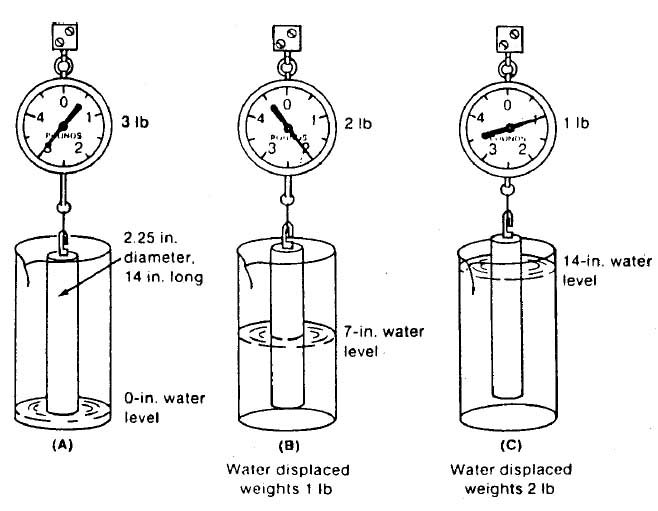Uses the theory of Archimedes Principle which states that “the force produced when a body is submerged into liquid with a constant density is equal to the fluid displaced”; which means that, when a body is fully or partially immersed in any liquid, it is reduced in weight by an amount equal to the weight of the volume of the liquid displaced.
In diagram A, the displacer is suspended by a spring scale that shows the weight of the displacer in the air. This would represent ‘0%’ in the level measurement application. The full weight of the displacer is entirely supported by the spring (3 lbs).
In diagram B, the water is at level that represents ‘50%’ of the full measurement span. Note that the scale indicates a weight of 2 lbs. The loss in weight of the displacer (1 lbs) is equal to the weight of the volume of water displaced.
When the water level is increased to a full level scale (diagram C), the net weight of the displacer is 1 lbs, which represent ‘100%’ of the measurement. It lost 2 lbs when the water level arises along the longitudinal axis of the displacer.
We can see that the weight of the displacer is inversely proportional to the liquid level in the chamber where the displacer is immersed.
